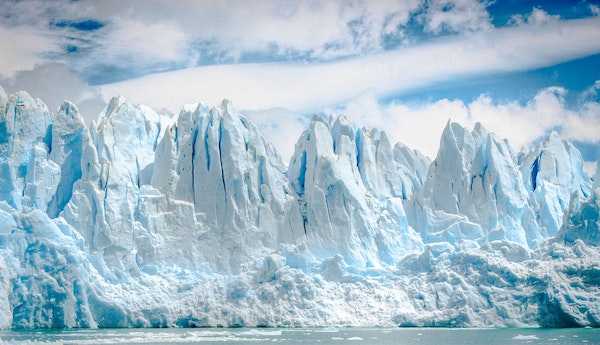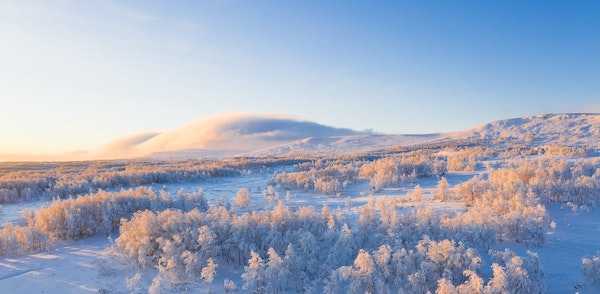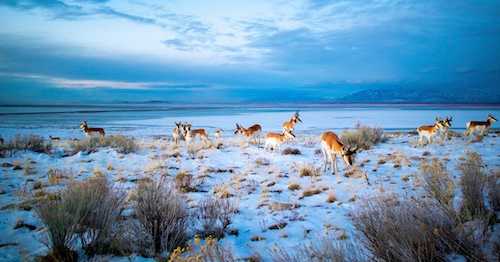FAQ 4: 4. How are people adapting to the effects of climate change and what are the known limits to adaptation?
The WGII overarching Frequently Asked Questions (FAQs) are an outreach material. They are based on the WGII Report and aim to help to interpret its concepts and findings to a broad audience. This version can still be subject to copyedits and tricklebacks.
If we want to deal with climate hazards and reduce risks for people and ecosystems that come from climate change, we have to adapt. Awareness of climate risks and action to reduce them have increased globally, but progress is uneven and our report highlights large gaps between adaptation action taken and what is needed in many regions. These gaps are caused by for example a lack of funding, political commitment, reliable information and sense of urgency. This leads to the most vulnerable people and ecosystems being hit hardest by climate change. In addition, the report clarifies: adaptation is essential to reduce harm, but if it is to be effective, it must go hand-in-hand with ambitious reductions in greenhouse gas emissions because with increased warming the effectiveness of many adaptation options declines.
Due to climate change, the world is experiencing higher temperatures, rising sea levels, and increased extreme events that impact life on land and in the oceans. To cope with these changes and avoid drastic losses and damages, humans and nature must adapt. For plants and animals, this means either adjusting to the changing climate and its effects by spending more time and energy on life-sustaining measures (like regulating their body temperature, selecting cooler places or staying hydrated) or, if possible, shifting to regions where environmental conditions are still in the climatic range that organisms are used to. For people and society, adaptation to climate change means adjusting our behaviour (e.g. where we choose to live; the way we plan our cities and settlements) and adapting our infrastructure (e.g. greening of urban areas for water storage) to deal with the changing climate - today and in the future.
Adapting successfully requires an analysis of risks caused by climate change and the implementation of measures in time to reduce these risks. That is the reason why IPCC authors ask five questions when assessing progress in climate adaptation regionally and globally: 1) Is there an awareness that climate change is causing risks? 2) Are the current and future extent of climate risks being assessed? 3) Have adaptation measures to reduce these risks been developed and included in planning? 4) Are those adaptation measures being implemented? 5) Are their implementation and effectiveness in reducing risks monitored and evaluated?
In our Working Group II Report, we conclude that the awareness and assessment of current and future climate risks have increased worldwide. National and local governments as well as corporations and civil society acknowledge the growing need for adaptation. At least 170 countries and many cities now have adaptation included in their climate policies and planning processes. Pilot projects and local experiments are being implemented in different sectors.
However, given the rate and scope of climate change impacts, actions on assessing and communicating risks, as well as on implementing adaptation are insufficient. For instance, current adaptation-related responses across all sectors and regions are dominated by minor modifications to usual practices or measures for dealing with extreme weather events – often allowing small or locally contained reductions of risks only. Whilst this may suffice in the short term, the long-term risks may require more extensive, transformative changes in our behaviour and infrastructure. In brief: ambition, scope, and progress on reducing climate risks are rising, but not by enough. Substantial adaptation gaps still exist, especially among populations with lower income. At the current rate of planning and implementation, these adaptation gaps will continue to grow. According to our new report, the world is currently under-prepared for the coming climate change impacts, particularly beyond 1.5°C global warming.
But there are also still large gaps in our understanding of climate change adaptation. For example, the extent to which adaptation actions are reducing climate risk, and for whom, is not always clear. Another important question is whether adaptation actions may have unintended consequences or side effects, causing more harm than good (this is called maladaptation). Built defences, such as sea walls, might protect coastal areas in the short term but their construction can destroy coastal ecosystems such as coral reefs. In the long term, these defences can even increase risks to people living behind them as more families move to an area that is supposedly safe to live in – as long as the sea wall is not over-topped or destroyed.
In our assessment we show that, in a warming world, measures that are effective now in one place might not work in 20 years, or in other places, which is why the monitoring and evaluation of the implemented actions are so important. Adaptation strategies might have to be revised constantly and those revisions will be most efficient if they are fact- and data-driven. But only a very few nations already have operational frameworks in place to track and evaluate implementation and results.
The Working Group II Report emphasises that the earlier the adaptation measures are implemented, the more the world will benefit because the potential to reduce climate risks through adaptation is higher until mid-century, and for global warming levels below 1.5°C. At higher levels of warming, the effectiveness of most land- and water-based adaptation options starts declining, and the extent of residual risks increases, as do the chances of future unintended consequences.
By investing in adaptation now, the world will avoid higher investments in the future because the potential benefits of adaptation activities outweigh their costs in the long term. In addition, adaptation can generate multiple benefits. Through various adaptation actions we may be able to secure the productivity of fisheries, agriculture and companies, foster innovation, health and well-being, strengthen food security and peoples’ livelihoods, and rebuild and strengthen nature, while at the same time reducing climate risks and damages.
The world should also be aware that the availability of adaptation options is constrained by limitations faced by the natural world and people, especially at higher degrees of warming. Biophysical, institutional, financial, social and cultural barriers can lead to soft and hard adaptation limits, particularly when combined. Hard limits occur when adaptive actions become infeasible to avoid risks. One prominent example is when small islands become uninhabitable due to sea level rise and lack of sufficient freshwater. In that case, inhabitants may have no other option than to abandon their homes. Soft limits, in contrast, can be overcome if additional financial, institutional or technological support becomes available. With sufficient funding, for instance, cities can invest in new parks and lakes, creating new spaces for citizens to find shade and cool down during heatwaves.
Our report finds that many species and ecosystems are currently near or beyond their hard adaptation limits, and people that rely on them to survive, are currently near or beyond their soft adaptation limits. Californian almonds for instance are predicted to increase their potential geographical range under climate warming, yet a trend of increasing drought has already resulted in trees being removed due to lack of access to irrigation water. This development hits small-scale farmers the hardest.
A lack of political commitment and funding as well as weak institutional capacities limit the implementation of adaptation options in agriculture, fisheries, aquaculture and forestry. In cities, governance capacity, financial support and the legacy of past urban infrastructure investment constrain how cities and settlements are able to adapt. We also see that in cities, the gap between what can be adapted to and what has been implemented is uneven. It is larger for the poorest 20% of the population than for the wealthiest 20%.
Poverty and inequality both present significant adaptation limits, resulting in unavoidable impacts for vulnerable groups, including women, young people, the elderly, ethnic and religious minorities, Indigenous People, and refugees. Climate change is likely to force many of them to switch from agriculture as the main source of income to other forms of wage labour, with implications for labour migration and urbanization.
Climate change is a global threat to which all people and ecosystems are vulnerable. Without effective adaptation, climate change has the potential to reverse the developmental gains in our world and push millions of people further into poverty. To avoid mounting losses, urgent accelerated action is required to adapt to climate change while making rapid, deep cuts in greenhouse gas emissions to limit warming so that we keep the range and scope of adaptation options as wide as possible.


